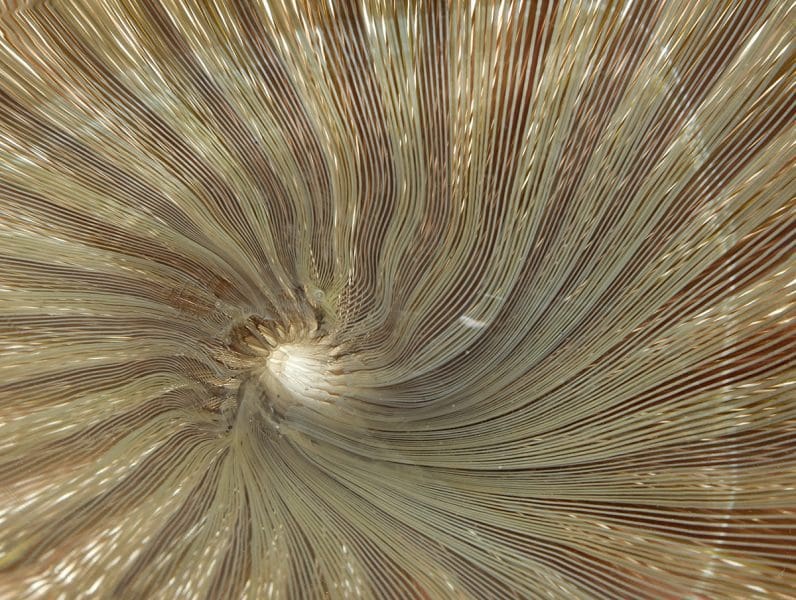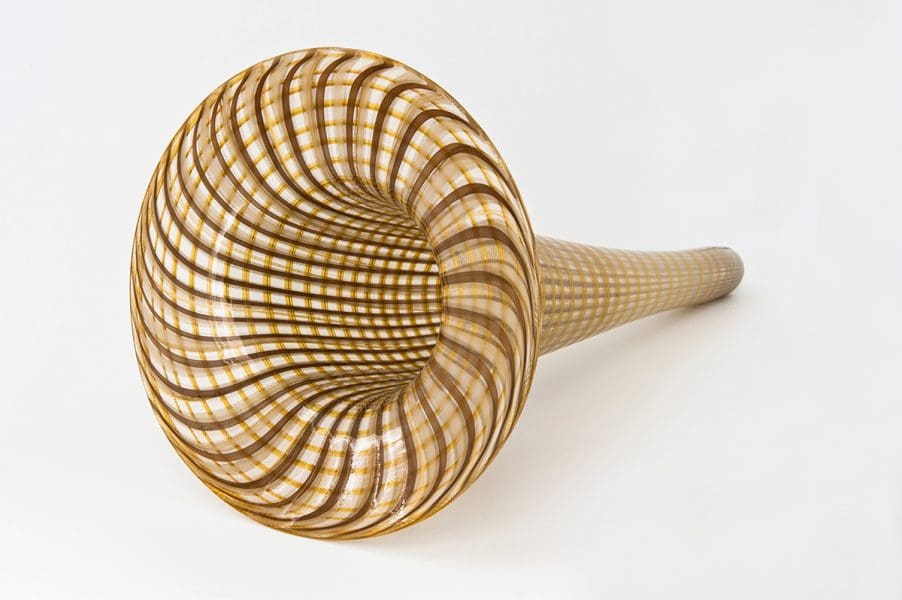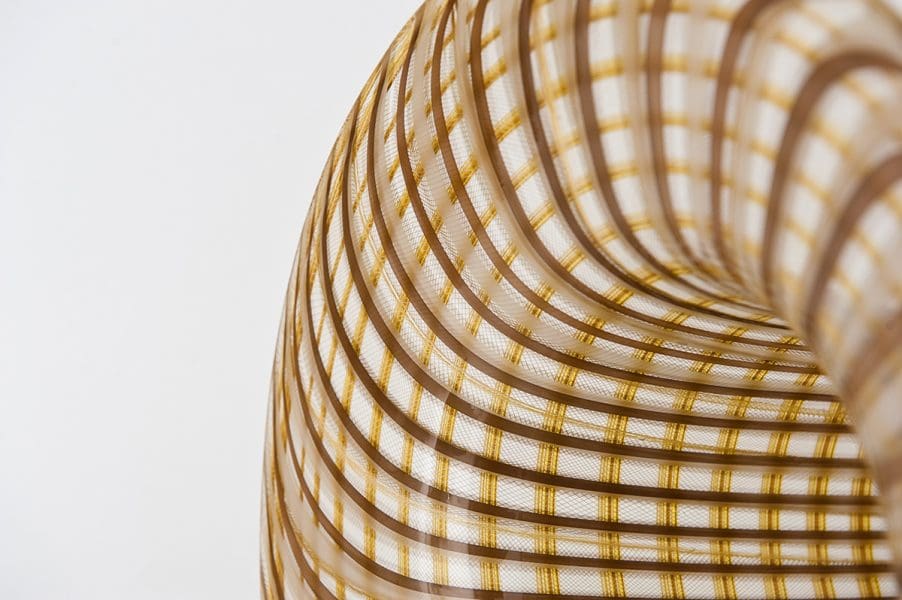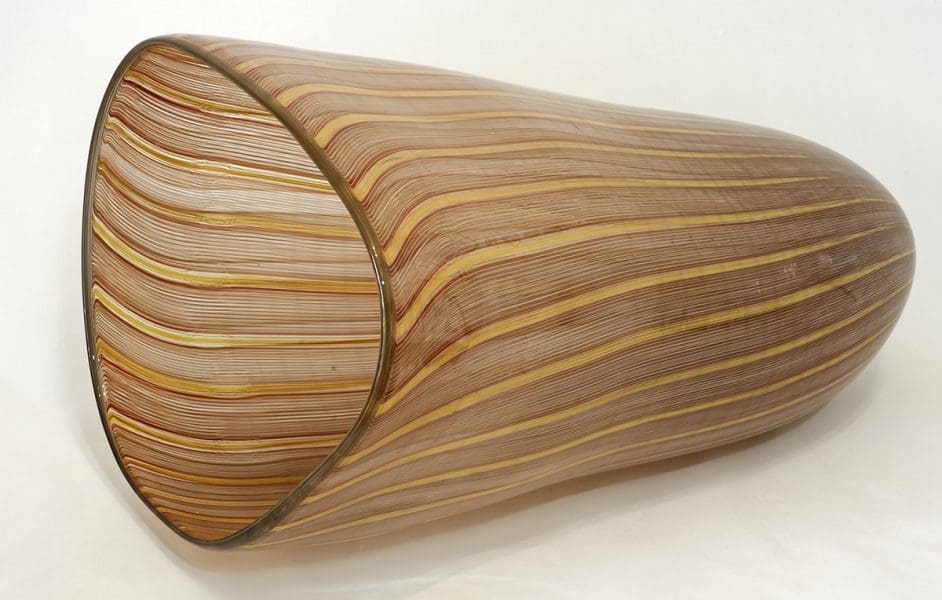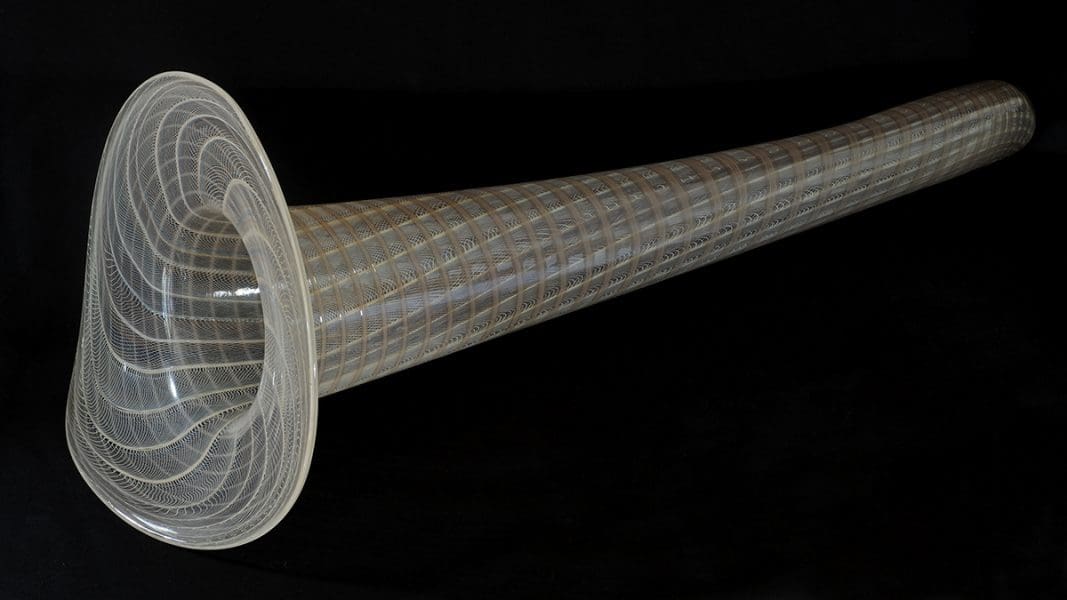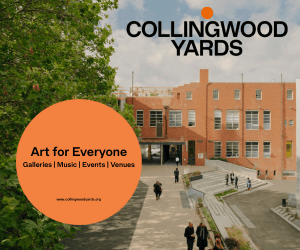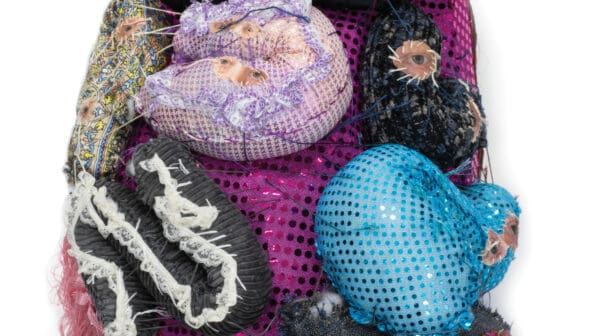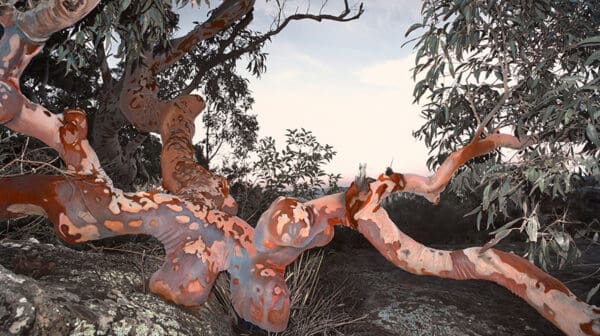Arrente artist Jennifer Kemarre Martiniello combines the traditional Aboriginal practice of weaving with the European practice of glass making. She describes her work as “a vehicle for cultural expression and cultural continuity.” By experimenting with the two mediums, Martiniello has created a series of glass weaves that speak of ecology, history and colonialism.
Her solo show, Ecology, Art, Tradition, gives an overview of the glass weaves Martiniello has been creating since 2011.
As she explains, “The show has works inspired by traditional Aboriginal woven objects. Things like eel traps and fish traps, as well as fish baits and dilly bags of various kinds, all of which have various weaves in them.”
Despite being known for working with glass, the medium is a relatively new venture for the artist. She became interested in glass after a residency at Canberra’s Glassworks in 2008. While it’s impossible to actually weave glass, Martiniello soon found that she was able to evoke and suggest traditional weaving within glass.
When discussing her work, Martiniello links her glass weaves with the feelings of disconnect she felt when first encountering traditional Aboriginal objects in an art gallery. “When I was growing up we used to go to the museum and art gallery and we would see traditional woven objects presented as if they belonged to a dead culture,” says Martiniello. “That used to make me quite cranky because I used to see the community actually weaving these things.”
This experience has always sat in Martiniello’s mind, giving her work an important cultural and environmental perspective. In particular, the artist wants to direct attention towards the ecology of traditional Aboriginal weaving, which is the oldest living weaving tradition in the world. “Traditional people lived from the environment and in harmony with it. So all of those objects were created through the ingenuity of being able to use and adapt materials from the natural environment,” says Martiniello. “When those objects finished their life-span they went back into the environment. There’s a seamlessness about the cycle of those things that I hope is being mirrored in my work.”
Ecology, Art, Tradition is part of NAIDOC week celebrations.
Ecology, Art, Tradition
Jennifer Kemarre Martiniello
Tuggeranong Arts Centre
6 July – 29 July





